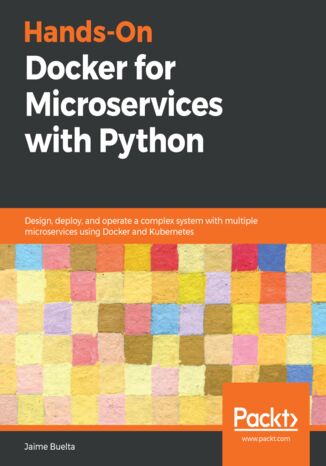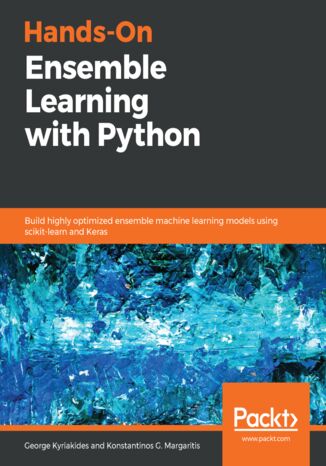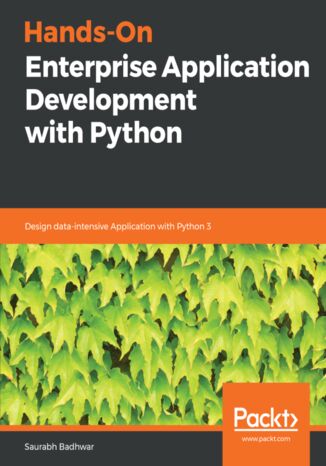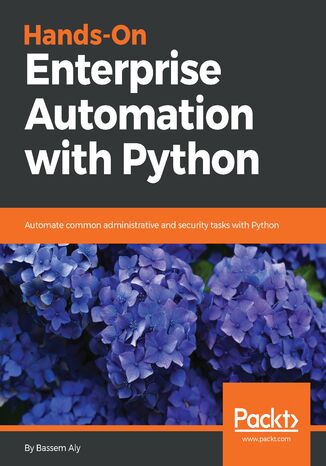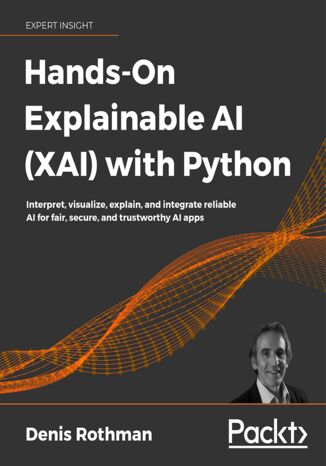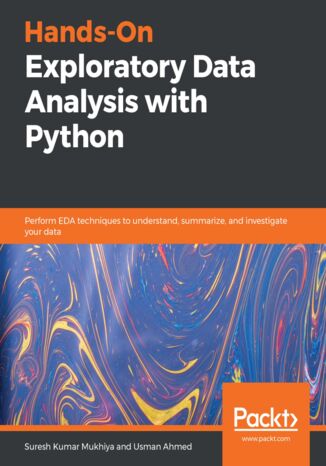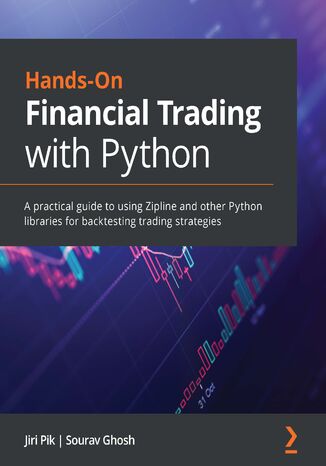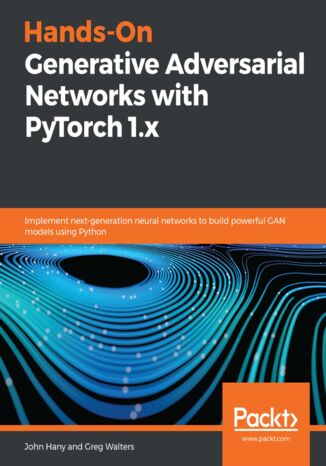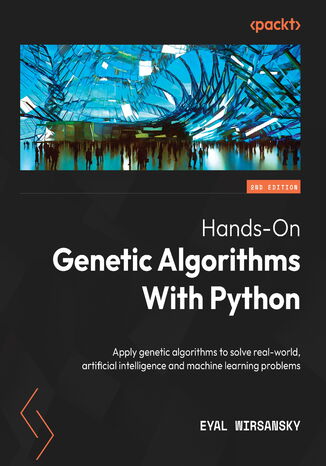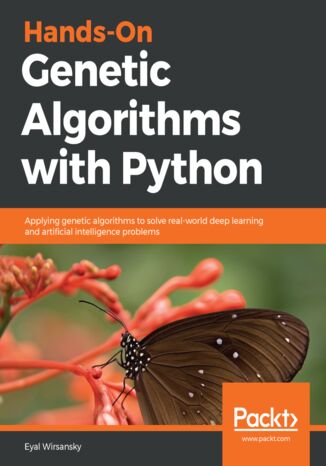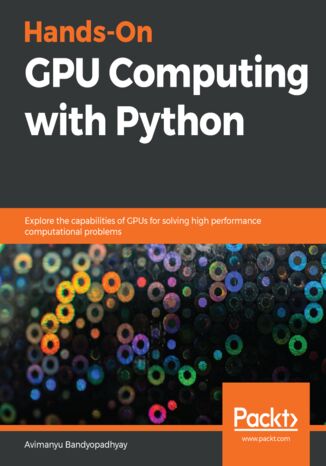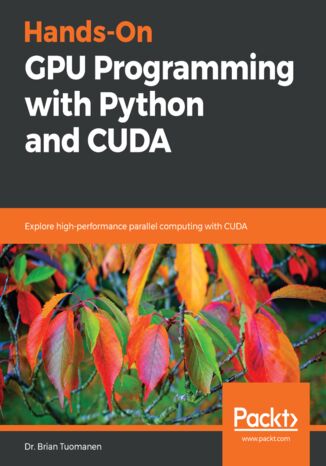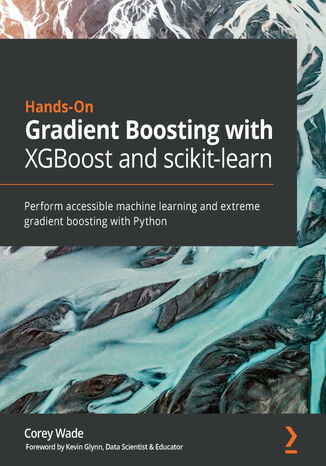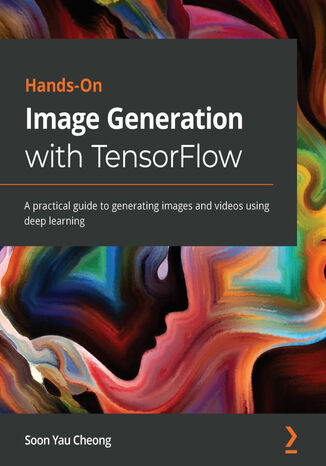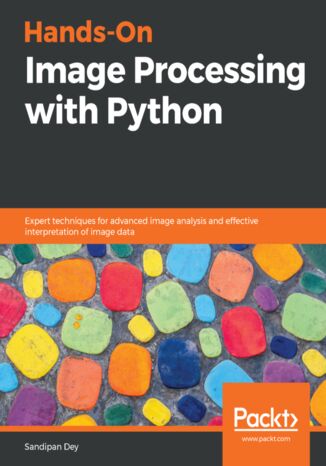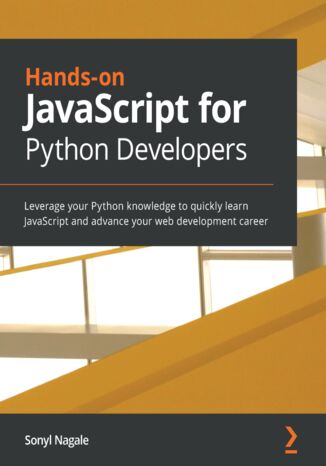Категорії
-
- Біткойн
- Ділова жінка
- Коучинг
- Контроль
- Електронний бізнес
- Економіка
- Фінанси
- Фондова біржа та інвестиції
- Особисті компетенції
- Комп'ютер в офісі
- Комунікація та переговори
- Малий бізнес
- Маркетинг
- Мотивація
- Мультимедійне навчання
- Нерухомість
- Переконання та НЛП
- Податки
- Соціальна політика
- Порадники
- Презентації
- Лідерство
- Зв'язки з громадськістю
- Звіти, аналізи
- Секрет
- Соціальні засоби комунікації
- Продаж
- Стартап
- Ваша кар'єра
- Управління
- Управління проектами
- Людські ресурси (HR)
-
- Architektura i wnętrza
- Безпека життєдіяльності
- Biznes i Ekonomia
- Будинок та сад
- Електронний бізнес
- Ekonomia i finanse
- Езотерика
- Фінанси
- Особисті фінанси
- Бізнес
- Фотографія
- Інформатика
- Відділ кадрів та оплата праці
- Для жінок
- Комп'ютери, Excel
- Бухгалтерія
- Культура та література
- Наукові та академічні
- Охорона навколишнього середовища
- Впливові
- Освіта
- Податки
- Подорожі
- Психологія
- Релігія
- Сільське господарство
- Ринок книг і преси
- Транспорт та спедиція
- Здоров'я та краса
-
- Офісні застосунки
- Бази даних
- Біоінформатика
- Бізнес ІТ
- CAD/CAM
- Digital Lifestyle
- DTP
- Електроніка
- Цифрова фотографія
- Комп'ютерна графіка
- Ігри
- Хакування
- Hardware
- IT w ekonomii
- Наукові пакети
- Шкільні підручники
- Основи комп'ютера
- Програмування
- Мобільне програмування
- Інтернет-сервери
- Комп'ютерні мережі
- Стартап
- Операційні системи
- Штучний інтелект
- Технологія для дітей
- Вебмайстерність
-
- Антології
- Балада
- Біографії та автобіографії
- Для дорослих
- Драми
- Журнали, щоденники, листи
- Епос, епопея
- Нарис
- Наукова фантастика та фантастика
- Фельєтони
- Художня література
- Гумор, сатира
- Інше
- Класичний
- Кримінальний роман
- Нехудожня література
- Художня література
- Mity i legendy
- Лауреати Нобелівської премії
- Новели
- Побутовий роман
- Okultyzm i magia
- Оповідання
- Спогади
- Подорожі
- Оповідна поезія
- Поезія
- Політика
- Науково-популярна
- Роман
- Історичний роман
- Проза
- Пригодницька
- Журналістика
- Роман-репортаж
- Romans i literatura obyczajowa
- Сенсація
- Трилер, жах
- Інтерв'ю та спогади
-
- Археологія
- Bibliotekoznawstwo
- Кінознавство / Теорія кіно
- Філологія
- Польська філологія
- Філософія
- Finanse i bankowość
- Географія
- Економіка
- Торгівля. Світова економіка
- Історія та археологія
- Історія мистецтва і архітектури
- Культурологія
- Мовознавство
- літературні студії
- Логістика
- Математика
- Ліки
- Гуманітарні науки
- Педагогіка
- Навчальні засоби
- Науково-популярна
- Інше
- Психологія
- Соціологія
- Театральні студії
- Богослов’я
- Економічні теорії та науки
- Transport i spedycja
- Фізичне виховання
- Zarządzanie i marketing
-
- Безпека життєдіяльності
- Історія
- Дорожній кодекс. Водійські права
- Юридичні науки
- Охорона здоров'я
- Загальне, компендіум
- Академічні підручники
- Інше
- Закон про будівництво і житло
- Цивільне право
- Фінансове право
- Господарське право
- Господарське та комерційне право
- Кримінальний закон
- Кримінальне право. Кримінальні злочини. Кримінологія
- Міжнародне право
- Міжнародне та іноземне право
- Закон про охорону здоров'я
- Закон про освіту
- Податкове право
- Трудове право та законодавство про соціальне забезпечення
- Громадське, конституційне та адміністративне право
- Кодекс про шлюб і сім'ю
- Аграрне право
- Соціальне право, трудове право
- Законодавство Євросоюзу
- Промисловість
- Сільське господарство та захист навколишнього середовища
- Словники та енциклопедії
- Державні закупівлі
- Управління
-
- Африка
- Альбоми
- Південна Америка
- Центральна та Північна Америка
- Австралія, Нова Зеландія, Океанія
- Австрія
- Азії
- Балкани
- Близький Схід
- Болгарія
- Китай
- Хорватія
- Чеська Республіка
- Данія
- Єгипет
- Естонія
- Європа
- Франція
- Гори
- Греція
- Іспанія
- Нідерланди
- Ісландія
- Литва
- Латвія
- Mapy, Plany miast, Atlasy
- Мініпутівники
- Німеччина
- Норвегія
- Активні подорожі
- Польща
- Португалія
- Інше
- Przewodniki po hotelach i restauracjach
- Росія
- Румунія
- Словаччина
- Словенія
- Швейцарія
- Швеція
- Світ
- Туреччина
- Україна
- Угорщина
- Велика Британія
- Італія
-
- Філософія життя
- Kompetencje psychospołeczne
- Міжособистісне спілкування
- Mindfulness
- Загальне
- Переконання та НЛП
- Академічна психологія
- Психологія душі та розуму
- Психологія праці
- Relacje i związki
- Батьківство та дитяча психологія
- Вирішення проблем
- Інтелектуальний розвиток
- Секрет
- Сексуальність
- Спокушання
- Зовнішній вигляд та імідж
- Філософія життя
-
- Біткойн
- Ділова жінка
- Коучинг
- Контроль
- Електронний бізнес
- Економіка
- Фінанси
- Фондова біржа та інвестиції
- Особисті компетенції
- Комунікація та переговори
- Малий бізнес
- Маркетинг
- Мотивація
- Нерухомість
- Переконання та НЛП
- Податки
- Соціальна політика
- Порадники
- Презентації
- Лідерство
- Зв'язки з громадськістю
- Секрет
- Соціальні засоби комунікації
- Продаж
- Стартап
- Ваша кар'єра
- Управління
- Управління проектами
- Людські ресурси (HR)
-
- Антології
- Балада
- Біографії та автобіографії
- Для дорослих
- Драми
- Журнали, щоденники, листи
- Епос, епопея
- Нарис
- Наукова фантастика та фантастика
- Фельєтони
- Художня література
- Гумор, сатира
- Інше
- Класичний
- Кримінальний роман
- Нехудожня література
- Художня література
- Mity i legendy
- Лауреати Нобелівської премії
- Новели
- Побутовий роман
- Okultyzm i magia
- Оповідання
- Спогади
- Подорожі
- Поезія
- Політика
- Науково-популярна
- Роман
- Історичний роман
- Проза
- Пригодницька
- Журналістика
- Роман-репортаж
- Romans i literatura obyczajowa
- Сенсація
- Трилер, жах
- Інтерв'ю та спогади
-
- Філософія життя
- Міжособистісне спілкування
- Mindfulness
- Загальне
- Переконання та НЛП
- Академічна психологія
- Психологія душі та розуму
- Психологія праці
- Relacje i związki
- Батьківство та дитяча психологія
- Вирішення проблем
- Інтелектуальний розвиток
- Секрет
- Сексуальність
- Спокушання
- Зовнішній вигляд та імідж
- Філософія життя
- Електронні книги
- Програмування
- Python
Python
Microservices architecture helps create complex systems with multiple, interconnected services that can be maintained by independent teams working in parallel. This book guides you on how to develop these complex systems with the help of containers.You’ll start by learning to design an efficient strategy for migrating a legacy monolithic system to microservices. You’ll build a RESTful microservice with Python and learn how to encapsulate the code for the services into a container using Docker. While developing the services, you’ll understand how to use tools such as GitHub and Travis CI to ensure continuous delivery (CD) and continuous integration (CI). As the systems become complex and grow in size, you’ll be introduced to Kubernetes and explore how to orchestrate a system of containers while managing multiple services. Next, you’ll configure Kubernetes clusters for production-ready environments and secure them for reliable deployments. In the concluding chapters, you’ll learn how to detect and debug critical problems with the help of logs and metrics. Finally, you’ll discover a variety of strategies for working with multiple teams dealing with different microservices for effective collaboration.By the end of this book, you’ll be able to build production-grade microservices as well as orchestrate a complex system of services using containers.
George Kyriakides, Konstantinos G. Margaritis
Ensembling is a technique of combining two or more similar or dissimilar machine learning algorithms to create a model that delivers superior predictive power. This book will demonstrate how you can use a variety of weak algorithms to make a strong predictive model.With its hands-on approach, you'll not only get up to speed with the basic theory but also the application of different ensemble learning techniques. Using examples and real-world datasets, you'll be able to produce better machine learning models to solve supervised learning problems such as classification and regression. In addition to this, you'll go on to leverage ensemble learning techniques such as clustering to produce unsupervised machine learning models. As you progress, the chapters will cover different machine learning algorithms that are widely used in the practical world to make predictions and classifications. You'll even get to grips with the use of Python libraries such as scikit-learn and Keras for implementing different ensemble models.By the end of this book, you will be well-versed in ensemble learning, and have the skills you need to understand which ensemble method is required for which problem, and successfully implement them in real-world scenarios.
Dynamically typed languages like Python are continuously improving. With the addition of exciting new features and a wide selection of modern libraries and frameworks, Python has emerged as an ideal language for developing enterprise applications. Hands-On Enterprise Application Development with Python will show you how to build effective applications that are stable, secure, and easily scalable.The book is a detailed guide to building an end-to-end enterprise-grade application in Python. You will learn how to effectively implement Python features and design patterns that will positively impact your application lifecycle. The book also covers advanced concurrency techniques that will help you build a RESTful application with an optimized frontend. Given that security and stability are the foundation for an enterprise application, you’ll be trained on effective testing, performance analysis, and security practices, and understand how to embed them in your codebase during the initial phase. You’ll also be guided in how to move on from a monolithic architecture to one that is service oriented, leveraging microservices and serverless deployment techniques.By the end of the book, you will have become proficient at building efficient enterprise applications in Python.
Hands-On Enterprise Automation with Python starts by covering the set up of a Python environment to perform automation tasks, as well as the modules, libraries, and tools you will be using. We’ll explore examples of network automation tasks using simple Python programs and Ansible. Next, we will walk you through automating administration tasks with Python Fabric, where you will learn to perform server configuration and administration, along with system administration tasks such as user management, database management, and process management. As you progress through this book, you’ll automate several testing services with Python scripts and perform automation tasks on virtual machines and cloud infrastructure with Python. In the concluding chapters, you will cover Python-based offensive security tools and learn how to automate your security tasks.By the end of this book, you will have mastered the skills of automating several system administration tasks with Python.
Effectively translating AI insights to business stakeholders requires careful planning, design, and visualization choices. Describing the problem, the model, and the relationships among variables and their findings are often subtle, surprising, and technically complex.Hands-On Explainable AI (XAI) with Python will see you work with specific hands-on machine learning Python projects that are strategically arranged to enhance your grasp on AI results analysis. You will be building models, interpreting results with visualizations, and integrating XAI reporting tools and different applications.You will build XAI solutions in Python, TensorFlow 2, Google Cloud’s XAI platform, Google Colaboratory, and other frameworks to open up the black box of machine learning models. The book will introduce you to several open-source XAI tools for Python that can be used throughout the machine learning project life cycle.You will learn how to explore machine learning model results, review key influencing variables and variable relationships, detect and handle bias and ethics issues, and integrate predictions using Python along with supporting the visualization of machine learning models into user explainable interfaces.By the end of this AI book, you will possess an in-depth understanding of the core concepts of XAI.
Suresh Kumar Mukhiya, Usman Ahmed
Exploratory Data Analysis (EDA) is an approach to data analysis that involves the application of diverse techniques to gain insights into a dataset. This book will help you gain practical knowledge of the main pillars of EDA - data cleaning, data preparation, data exploration, and data visualization.You’ll start by performing EDA using open source datasets and perform simple to advanced analyses to turn data into meaningful insights. You’ll then learn various descriptive statistical techniques to describe the basic characteristics of data and progress to performing EDA on time-series data. As you advance, you’ll learn how to implement EDA techniques for model development and evaluation and build predictive models to visualize results. Using Python for data analysis, you’ll work with real-world datasets, understand data, summarize its characteristics, and visualize it for business intelligence.By the end of this EDA book, you’ll have developed the skills required to carry out a preliminary investigation on any dataset, yield insights into data, present your results with visual aids, and build a model that correctly predicts future outcomes.
Creating an effective system to automate your trading can help you achieve two of every trader’s key goals; saving time and making money. But to devise a system that will work for you, you need guidance to show you the ropes around building a system and monitoring its performance. This is where Hands-on Financial Trading with Python can give you the advantage.This practical Python book will introduce you to Python and tell you exactly why it’s the best platform for developing trading strategies. You’ll then cover quantitative analysis using Python, and learn how to build algorithmic trading strategies with Zipline using various market data sources.Using Zipline as the backtesting library allows access to complimentary US historical daily market data until 2018. As you advance, you will gain an in-depth understanding of Python libraries such as NumPy and pandas for analyzing financial datasets, and explore Matplotlib, statsmodels, and scikit-learn libraries for advanced analytics.As you progress, you’ll pick up lots of skills like time series forecasting, covering pmdarima and Facebook Prophet.By the end of this trading book, you will be able to build predictive trading signals, adopt basic and advanced algorithmic trading strategies, and perform portfolio optimization to help you get —and stay—ahead of the markets.
With continuously evolving research and development, Generative Adversarial Networks (GANs) are the next big thing in the field of deep learning. This book highlights the key improvements in GANs over generative models and guides in making the best out of GANs with the help of hands-on examples.This book starts by taking you through the core concepts necessary to understand how each component of a GAN model works. You'll build your first GAN model to understand how generator and discriminator networks function. As you advance, you'll delve into a range of examples and datasets to build a variety of GAN networks using PyTorch functionalities and services, and become well-versed with architectures, training strategies, and evaluation methods for image generation, translation, and restoration. You'll even learn how to apply GAN models to solve problems in areas such as computer vision, multimedia, 3D models, and natural language processing (NLP). The book covers how to overcome the challenges faced while building generative models from scratch. Finally, you'll also discover how to train your GAN models to generate adversarial examples to attack other CNN and GAN models.By the end of this book, you will have learned how to build, train, and optimize next-generation GAN models and use them to solve a variety of real-world problems.
Written by Eyal Wirsansky, a senior data scientist and AI researcher with over 25 years of experience and a research background in genetic algorithms and neural networks, Hands-On Genetic Algorithms with Python offers expert insights and practical knowledge to master genetic algorithms.After an introduction to genetic algorithms and their principles of operation, you’ll find out how they differ from traditional algorithms and the types of problems they can solve, followed by applying them to search and optimization tasks such as planning, scheduling, gaming, and analytics. As you progress, you’ll delve into explainable AI and apply genetic algorithms to AI to improve machine learning and deep learning models, as well as tackle reinforcement learning and NLP tasks. This updated second edition further expands on applying genetic algorithms to NLP and XAI and speeding up genetic algorithms with concurrency and cloud computing. You’ll also get to grips with the NEAT algorithm. The book concludes with an image reconstruction project and other related technologies for future applications.By the end of this book, you’ll have gained hands-on experience in applying genetic algorithms across a variety of fields, with emphasis on artificial intelligence with Python.
Genetic algorithms are a family of search, optimization, and learning algorithms inspired by the principles of natural evolution. By imitating the evolutionary process, genetic algorithms can overcome hurdles encountered in traditional search algorithms and provide high-quality solutions for a variety of problems. This book will help you get to grips with a powerful yet simple approach to applying genetic algorithms to a wide range of tasks using Python, covering the latest developments in artificial intelligence.After introducing you to genetic algorithms and their principles of operation, you'll understand how they differ from traditional algorithms and what types of problems they can solve. You'll then discover how they can be applied to search and optimization problems, such as planning, scheduling, gaming, and analytics. As you advance, you'll also learn how to use genetic algorithms to improve your machine learning and deep learning models, solve reinforcement learning tasks, and perform image reconstruction. Finally, you'll cover several related technologies that can open up new possibilities for future applications.By the end of this book, you'll have hands-on experience of applying genetic algorithms in artificial intelligence as well as in numerous other domains.
GPUs are proving to be excellent general purpose-parallel computing solutions for high-performance tasks such as deep learning and scientific computing.This book will be your guide to getting started with GPU computing. It begins by introducing GPU computing and explaining the GPU architecture and programming models. You will learn, by example, how to perform GPU programming with Python, and look at using integrations such as PyCUDA, PyOpenCL, CuPy, and Numba with Anaconda for various tasks such as machine learning and data mining. In addition to this, you will get to grips with GPU workflows, management, and deployment using modern containerization solutions. Toward the end of the book, you will get familiar with the principles of distributed computing for training machine learning models and enhancing efficiency and performance.By the end of this book, you will be able to set up a GPU ecosystem for running complex applications and data models that demand great processing capabilities, and be able to efficiently manage memory to compute your application effectively and quickly.
Hands-On GPU Programming with Python and CUDA. Explore high-performance parallel computing with CUDA
Hands-On GPU Programming with Python and CUDA hits the ground running: you’ll start by learning how to apply Amdahl’s Law, use a code profiler to identify bottlenecks in your Python code, and set up an appropriate GPU programming environment. You’ll then see how to “query” the GPU’s features and copy arrays of data to and from the GPU’s own memory.As you make your way through the book, you’ll launch code directly onto the GPU and write full blown GPU kernels and device functions in CUDA C. You’ll get to grips with profiling GPU code effectively and fully test and debug your code using Nsight IDE. Next, you’ll explore some of the more well-known NVIDIA libraries, such as cuFFT and cuBLAS.With a solid background in place, you will now apply your new-found knowledge to develop your very own GPU-based deep neural network from scratch. You’ll then explore advanced topics, such as warp shuffling, dynamic parallelism, and PTX assembly. In the final chapter, you’ll see some topics and applications related to GPU programming that you may wish to pursue, including AI, graphics, and blockchain.By the end of this book, you will be able to apply GPU programming to problems related to data science and high-performance computing.
XGBoost is an industry-proven, open-source software library that provides a gradient boosting framework for scaling billions of data points quickly and efficiently.The book introduces machine learning and XGBoost in scikit-learn before building up to the theory behind gradient boosting. You’ll cover decision trees and analyze bagging in the machine learning context, learning hyperparameters that extend to XGBoost along the way. You’ll build gradient boosting models from scratch and extend gradient boosting to big data while recognizing speed limitations using timers. Details in XGBoost are explored with a focus on speed enhancements and deriving parameters mathematically. With the help of detailed case studies, you’ll practice building and fine-tuning XGBoost classifiers and regressors using scikit-learn and the original Python API. You'll leverage XGBoost hyperparameters to improve scores, correct missing values, scale imbalanced datasets, and fine-tune alternative base learners. Finally, you'll apply advanced XGBoost techniques like building non-correlated ensembles, stacking models, and preparing models for industry deployment using sparse matrices, customized transformers, and pipelines.By the end of the book, you’ll be able to build high-performing machine learning models using XGBoost with minimal errors and maximum speed.
The emerging field of Generative Adversarial Networks (GANs) has made it possible to generate indistinguishable images from existing datasets. With this hands-on book, you’ll not only develop image generation skills but also gain a solid understanding of the underlying principles.Starting with an introduction to the fundamentals of image generation using TensorFlow, this book covers Variational Autoencoders (VAEs) and GANs. You’ll discover how to build models for different applications as you get to grips with performing face swaps using deepfakes, neural style transfer, image-to-image translation, turning simple images into photorealistic images, and much more. You’ll also understand how and why to construct state-of-the-art deep neural networks using advanced techniques such as spectral normalization and self-attention layer before working with advanced models for face generation and editing. You'll also be introduced to photo restoration, text-to-image synthesis, video retargeting, and neural rendering. Throughout the book, you’ll learn to implement models from scratch in TensorFlow 2.x, including PixelCNN, VAE, DCGAN, WGAN, pix2pix, CycleGAN, StyleGAN, GauGAN, and BigGAN.By the end of this book, you'll be well versed in TensorFlow and be able to implement image generative technologies confidently.
Image processing plays an important role in our daily lives with various applications such as in social media (face detection), medical imaging (X-ray, CT-scan), security (fingerprint recognition) to robotics & space. This book will touch the core of image processing, from concepts to code using Python.The book will start from the classical image processing techniques and explore the evolution of image processing algorithms up to the recent advances in image processing or computer vision with deep learning. We will learn how to use image processing libraries such as PIL, scikit-mage, and scipy ndimage in Python. This book will enable us to write code snippets in Python 3 and quickly implement complex image processing algorithms such as image enhancement, filtering, segmentation, object detection, and classification. We will be able to use machine learning models using the scikit-learn library and later explore deep CNN, such as VGG-19 with Keras, and we will also use an end-to-end deep learning model called YOLO for object detection. We will also cover a few advanced problems, such as image inpainting, gradient blending, variational denoising, seam carving, quilting, and morphing.By the end of this book, we will have learned to implement various algorithms for efficient image processing.
Knowledge of Python is a great foundation for learning other languages. This book will help you advance in your software engineering career by leveraging your Python programming skills to learn JavaScript and apply its unique features not only for frontend web development but also for streamlining work on the backend.Starting with the basics of JavaScript, you’ll cover its syntax, its use in the browser, and its frameworks and libraries. From working with user interactions and ingesting data from APIs through to creating APIs with Node.js, this book will help you get up and running with JavaScript using hands-on exercises, code snippets, and detailed descriptions of JavaScript implementation and benefits. To understand the use of JavaScript in the backend, you’ll explore Node.js and discover how it communicates with databases. As you advance, you’ll get to grips with creating your own RESTful APIs and connecting the frontend and backend for holistic full-stack development knowledge.By the end of this Python JavaScript book, you’ll have the knowledge you need to write full-fledged web applications from start to finish. You’ll have also gained hands-on experience of working through several projects, which will help you advance in your career as a JavaScript developer.

